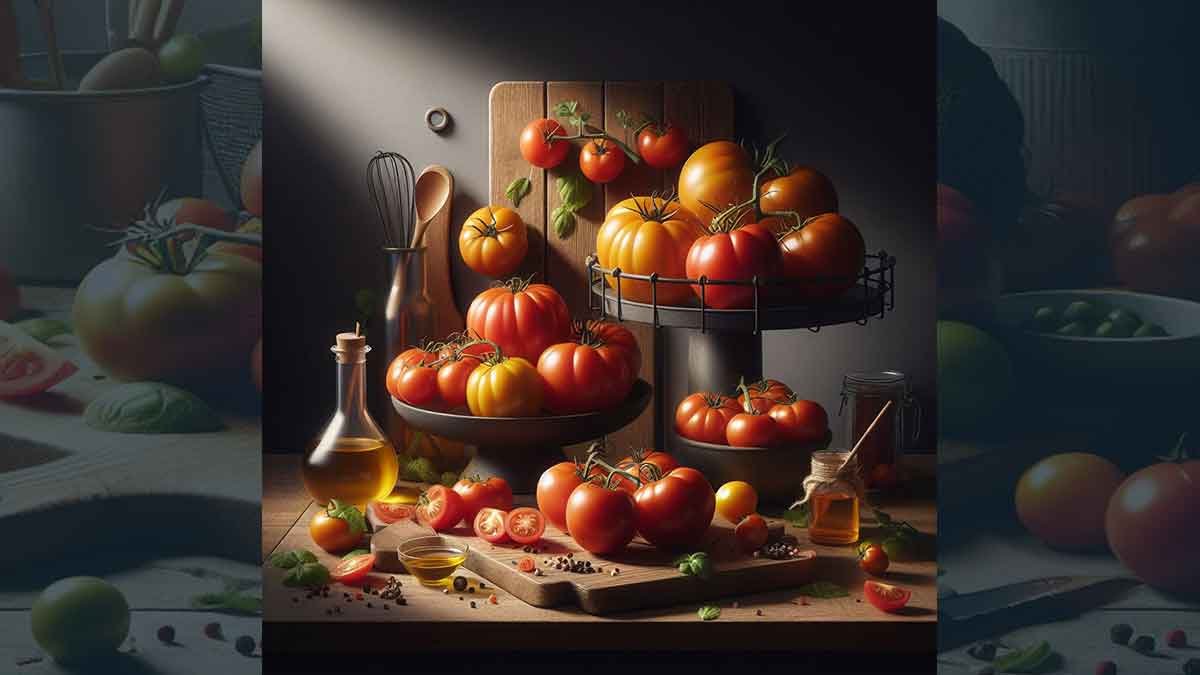
A Guide to Different Types of Tomatoes and Their Usage
Introduction
Tomatoes are one of the most versatile and widely used fruits in the culinary world. They come in various shapes, sizes, and colors, each offering a unique flavor profile. In this article, we will explore the different types of tomatoes and their various uses in cooking.
Table of Contents For Different Types of Tomatoes
1. Beefsteak Tomatoes
Beefsteak tomatoes are large and meaty, making them perfect for slicing and using in sandwiches or burgers. They have a rich, sweet flavor and are often used in salads or as a base for sauces and salsas.
2. Cherry Tomatoes

Cherry tomatoes are small, round, and bite-sized. They are incredibly sweet and are often eaten raw in salads or as a snack. They also add a burst of flavor to pasta dishes and are commonly used in Mediterranean cuisine.
3. Roma Tomatoes
Roma tomatoes, also known as plum tomatoes, are oval-shaped and have a firm texture. They are perfect for making sauces, soups, and stews due to their low water content and rich flavor. Roma tomatoes are also great for oven-roasting or sun-drying.
4. Grape Tomatoes
Grape tomatoes are similar in size and shape to cherry tomatoes but have a slightly elongated appearance. They are sweeter than cherry tomatoes and are often used in salads, roasted vegetable dishes, or as a garnish for appetizers and canapés.
5. Green Tomatoes
Green tomatoes are unripe tomatoes that have a tangy and slightly sour flavor. They are commonly used in fried green tomato recipes, where they are breaded and fried until crispy. Green tomatoes can also be pickled or used in chutneys and relishes.
6. Heirloom Tomatoes
Heirloom tomatoes are non-hybrid varieties that have been passed down through generations. They come in a wide range of colors, sizes, and flavors, often with a more intense and complex taste compared to commercially grown tomatoes. Heirloom tomatoes are best enjoyed raw in salads or as a stand-alone dish.
7. Plum Tomatoes

Plum tomatoes, also known as Italian tomatoes, are small and elongated with a firm texture. They are commonly used in Italian cuisine, particularly for making tomato sauce, as they have fewer seeds and less water content. Plum tomatoes are also great for canning and preserving.
FAQs about Tomatoes
Are tomatoes fruits or vegetables?
Botanically speaking, tomatoes are classified as fruits because they develop from the ovary of a flowering plant and contain seeds. However, they are commonly referred to as vegetables in culinary terms.
How do I store tomatoes?
Tomatoes should be stored at room temperature, away from direct sunlight. Refrigeration can affect their texture and flavor, so it is best to consume them within a few days of purchase.
Can I freeze tomatoes?
Yes, tomatoes can be frozen. To freeze them, first, blanch them in boiling water for a minute, then transfer them to an ice bath. Once cooled, remove the skins and freeze the tomatoes whole or in slices.
Can I eat the seeds of tomatoes?
Yes, tomato seeds are safe to eat and contain valuable nutrients. However, some people prefer to remove the seeds, especially when making sauces or salsas.
Are green tomatoes poisonous?
No, green tomatoes are not poisonous. While they are not as ripe and sweet as red tomatoes, they can be enjoyed when cooked or pickled.
Can I grow tomatoes in containers?
Yes, tomatoes can be successfully grown in containers, provided they have sufficient sunlight, water, and proper support. Choose dwarf or determinate varieties for container gardening.
Conclusion
Tomatoes are a staple ingredient in countless recipes and offer a wide range of flavors and textures. Whether you prefer the sweetness of cherry tomatoes in a salad or the rich, meaty flavor of beefsteak tomatoes in a sandwich, there is a tomato variety to suit every taste. Experiment with different types of tomatoes to enhance your culinary creations and enjoy the versatility they bring to your dishes.